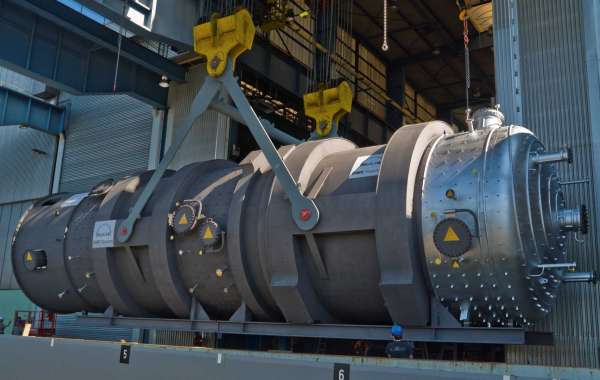Chemical reactors are used to carry out chemical reactions. They are designed by chemical engineers and are used in industrial processes. They are safe for humans and are easy to use. However, you must conduct quality tests before purchasing a chemical reactor.
The main classification schemes for chemical reactors are batch and continuous. Batch reactors are loaded with a batch of chemical reactants, while a continuous process adds and removes material continuously.
They are used to carry out chemical reactions
Chemical reactors are used to carry out a wide variety of reactions. They are usually made of durable materials with a high tensile strength that can withstand the pressure from the chemicals. These chemical reactors are also easy to maintain and use. They have a simple design and control system that is user-friendly. However, there are particular operational variables that you should pay close attention to when selecting a chemical reactor.
A reactor’s design is influenced by its operation mode and reaction kinetics. Its size and shape are determined by the type of reactants and products that it will accommodate, as well as its method of product separation. Its temperature, which is optimal for the reaction, and its pressure are also factors that impact its design.
There are two main types of chemical reactors: batch and continuous systems. A batch reactor requires material to be loaded and unloaded on a regular basis, while a continuous system allows the reagents to flow continuously through the reaction. A continuous reactor can be divided into different sub-categories, such as plug flow and continuous stirred tank reactors.
The chemical reactor is a crucial piece of equipment for any industrial process, but it can be difficult to choose the right one for your application. Many different models are available, so it’s important to know what features you need before making a purchase. This will help you avoid wasting money on a model that doesn’t meet your specifications.
They are designed by chemical engineers
Chemical reactors are large vessels within which chemical reactions can be carried out under controlled conditions. These devices are used in the production of chemicals such as components for pharmaceutical compounds. The designs of these reactors vary widely, from small open kettles fitted with stirrers and heaters to the vast structures depicted in photographs of industrial plants. They can contain many different types of chemicals and may be surrounded by protective shields to prevent leakage.
In the future, it is expected that chemical reaction vessels will be reduced in size to about the size of a desktop computer known as microreactors. This will result in a reduction of capital costs, and a smaller quantity of chemicals can be used at any one time which makes the process safer. This will also make it easier to keep the temperature constant because there is a greater surface area for a given volume.
Reactors are available in two basic types: batch and continuous. The former operates in batches, with the reactants being mixed before each batch starts, and the latter runs continuously as long as the necessary materials are supplied. Both of these types can be further classified into a variety of different models, including plug flow, perfect mixing, and mixed-flow.
When choosing a chemical reactor, you need to consider the maximum and minimum temperatures required for the reaction to take place. You must also ensure that the reactor is safe for operation. You should also look at the specific operational variables such as reaction rate, conversion ratio, and temperature and pressure.
They are used in industrial processes
Chemical reactors are used in industrial processes to improve the safety and efficiency of chemical reactions. They contain the reaction in a closed container, which reduces the risk of accidents or exposure to hazardous materials. They also allow for a more controlled environment, which reduces energy and raw material use.
There are many types of chemical reactors, ranging from small laboratory reactors to the vast structures often depicted in photographs of industrial plants. Some of them are as tall as buildings, and they can hold several tonnes of materials at any one time. Chemical reactors are made of various materials and are designed to meet the needs of specific applications.
The simplest type of chemical reactor is the batch reactor. It consists of an agitator and a provision to apply utilities to heat or cool the reaction mass. The reaction is carried out in a closed system and the products are removed at the end of the operation. This process is useful when a company wants to produce a range of products that require different reaction conditions.
Another type of chemical reactor is the continuous reactor. These are used in production processes that require large quantities of chemicals and are usually installed in chemical plants. They can operate for months without a shutdown, which is essential in the chemical industry. They can be operated continuously or on a batch basis. For example, a water-softener uses a continuous process to remove hardness from water. Hard water enters the tube, reacts with an ion-exchange resin, and produces soft water at the exit.
They are safe
Chemical reactors contain a controlled environment for chemical reactions, reducing the chance of accidents and exposure to hazardous materials. They also allow for more efficient industrial processes, saving energy and raw materials. However, users must follow some simple steps to ensure safety when working with a chemical reactor under pressurised conditions. For example, they must test the reaction for potential by-products and hazards before scaling up. They must also identify what the circumstances are under which a reaction might become uncontrollable, and make plans to avoid them.
A recent development in chemical reactors is the use of oscillatory flow mixing. This technique involves the fluids to be reacted being oscillated inside the reactor by baffles at frequencies of between 0.5 and 15 Hz with varying amplitudes. This allows the heat to be transferred more effectively and reduces the risk of back mixing. It also allows the temperature to be kept constant more readily, especially for highly exothermic reactions.
In the future, many chemicals may be produced in reactors for sale about the size of a desktop computer known as microreactors. This reduced size will reduce the capital costs for such reactions and will also reduce the amount of chemicals that are used at one time. The reduced size of these reactors will also enable better and enhanced control over the chemical process.








